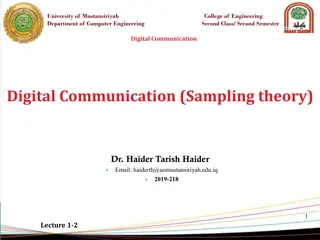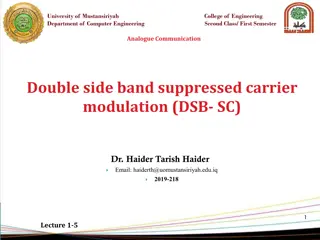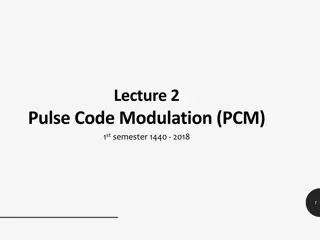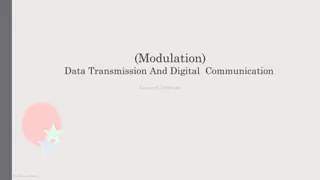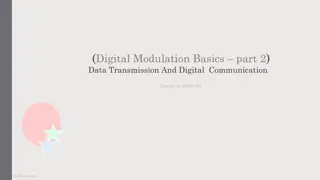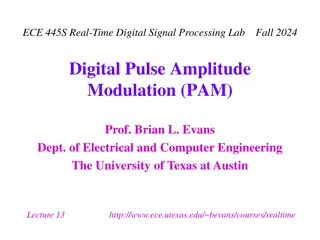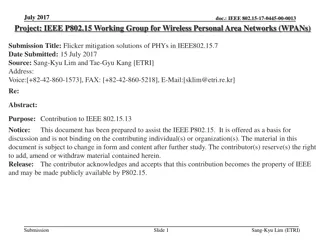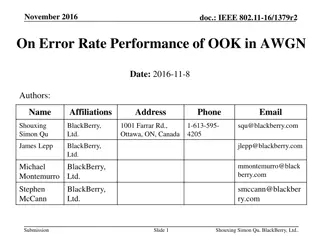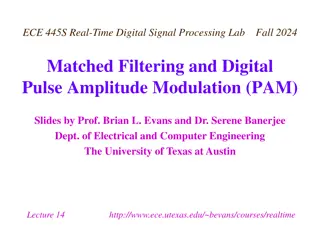Understanding Performance Analysis of Digital Modulation Techniques
Explore the realm of digital modulation techniques such as ASK, FSK, PSK, QPSK, QAM, and more. Learn about bandwidth efficiency, baud rates, minimum bandwidth, and how to calculate them. Discover the importance of M-ary modulation and how it impacts data transmission rates and bandwidth requirements. Dive into examples and formulas to solidify your understanding.
Download Presentation

Please find below an Image/Link to download the presentation.
The content on the website is provided AS IS for your information and personal use only. It may not be sold, licensed, or shared on other websites without obtaining consent from the author. Download presentation by click this link. If you encounter any issues during the download, it is possible that the publisher has removed the file from their server.
E N D
Presentation Transcript
Performance Analysis of Digital Modulation Techniques
Binary modulation schemes ASK, FSK, PSK n = 1, M = 2 (Only Two output conditions are possible) Baud is equal to the bit rate
M-ary Modulation Techniques QPSK, 8-PSK, 18-PSK, QAM, 16-QAM n > 1 M > 1 (number of output conditions increases) Minimum bandwidth decreases Baud rate decreases Achieves BANDWIDTH COMPRESSION Less bandwidth is required to propagate a given bit rate Higher data transmission rates are possible for a given bandwidth
BANDWIDTH EFFICIENCY Also called as Information density or Spectral efficiency Used to compare the performance of one digital modulation technique to another
BANDWIDTH EFFICIENCY Bandwidth efficiency is the ratio of the transmission bit rate to the minimum bandwidth required for a particular modulation scheme Generally normalized to a 1-Hz bandwidth Indicates the number of bits that can be propagated through a transmission medium for each hertz of bandwidth
BANDWIDTH EFFICIENCY Bandwidth efficiency can also be given as a percentage by simply multiplying B by 100
Example - 1 For an 8-PSK system, operating with an information bit rate of 24 kbps, Determine (a) baud (b) minimum bandwidth (c) bandwidth efficiency
Formula To Remember For all Modulation types except FSK Minimum Bandwidth is given by Baud rate is given by
Answer Minimum Bandwidth is given by Baud rate is given by
Example - 2 For 16-PSK and a transmission system with a 10 kHz bandwidth, determine the maximum bit rate.
Answer The bandwidth efficiency for 16-PSK is 4 i.e four bits can be propagated through the system for each hertz of bandwidth Maximum bit rate is simply the product of the bandwidth and the bandwidth efficiency
Example -3 For the following modulation schemes, construct a table showing the number of bits encoded, number of output conditions, minimum bandwidth, and baud for an information data rate of 12 kbps: QPSK, 8-PSK, 8-QAM, 16-PSK, and 16-QAM








